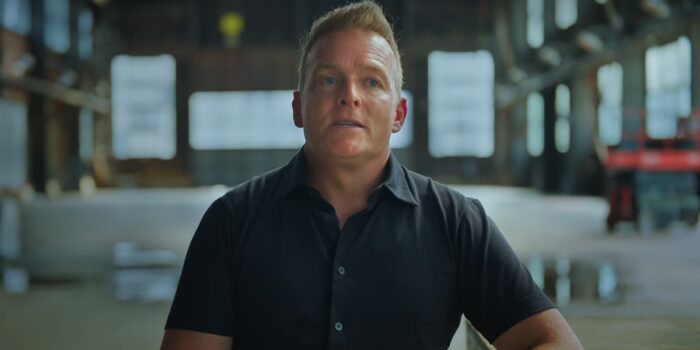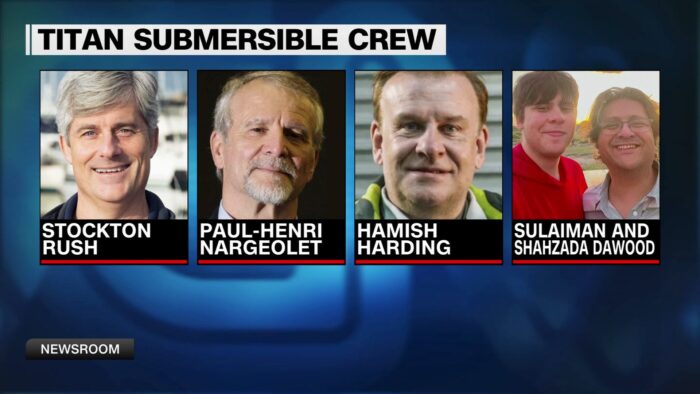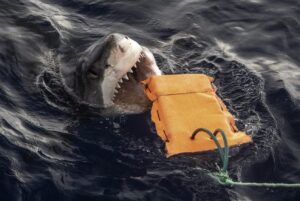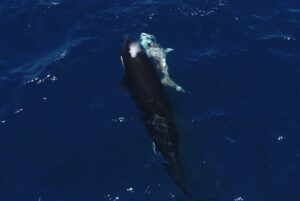“Just watched the Titan submersible documentary, hell isn’t hot enough for Stockton Rush.” That was the blunt verdict from one viewer on social media after Netflix’s ‘Titan: The OceanGate Disaster’ premiered recently. It’s a strong opinion, but after watching the new 111-minute film, which unravels a tale of hubris, employee suppression, and regulatory inaction, it’s kind of hard to disagree.
The documentary on the now-infamous Titan submersible implosion, which killed all five on board, is less about the events of the deep-sea tragedy than about a culture of unchecked innovation led by OceanGate’s fame-hungry CEO Stockton Rush, who likened safety standards to waste and dissent to heresy. It’s also a portrait of the whistleblower no one backed, and the institutions that didn’t (or couldn’t) act.

Former OceanGate safety expert David Lochridge. Photo: Netflix
The whistleblower
One voice echoes louder than most in this film, that of David Lochridge, the man who tried to stop it all before it began. A former submarine safety expert for the British Navy and a certified diver, Lochridge was brought in to oversee safety and engineering on OceanGate’s experimental deep-sea submersible, Titan. It was made from carbon fiber, a material never used for this kind of extreme-depth vessel.
Titan was marketed as revolutionary. Lochridge joined with the understanding that the sub would be inspected and certified by an independent third party — a process known in maritime engineering as “classing.”
But that assurance quickly dissolved. According to testimony in the documentary, it became clear that OceanGate co-founder and CEO Stockton Rush had little appetite for traditional safety oversight. Testing and caution seemed to take a back seat to being seen as a maverick innovator, and getting paying clients in the water and down to view the wreck of the Titanic.
The warning pings
Throughout the documentary, viewers hear a repeated motif: the high-pitched “ping” of Titan’s acoustic hull monitoring system. Designed to detect strain in the carbon-fiber shell, these sounds are not anomalies — they’re the microscopic fractures of carbon fiber under stress. In one chilling sequence, Rush takes Titan to nearly 4,000m, as the hull groans under pressure. Those pings, we learn, are the sound of the vessel’s structural integrity slowly unraveling.
Conflict between Lochridge and Rush grew, and Lochridge was sidelined from Titan‘s development following a disagreement over a botched dive piloted by Rush in another more traditional submersible. In 2018, Lochridge was, however, asked to inspect Titan. He then authored an internal report highlighting multiple red flags, such as visual evidence of flaws in the carbon fiber after pressure testing and the absence of essential non-destructive tests.

The Titan submersible. Photo: OceanGate
Authorities’ inertia
Lochridge’s recommendation was clear: Titan should not dive again until the risks were properly addressed. OceanGate’s response was telling. Lochridge was asked to sign off on the continued use of the sub. When he refused, he was fired and later sued for “revealing confidential information.” Lochridge filed a whistleblower complaint with the U.S. Occupational Safety and Health Administration (OSHA).
The documentary reveals that OSHA did start an investigation. But instead of providing immediate support to Lochridge, the process dragged on for months. As legal fees mounted and pressure from OceanGate grew, Lochridge withdrew his complaint. The OSHA probe then gathered dust in a case file at the agency.
As one expert notes, the case exposed a dangerous loophole. OceanGate’s classification of Titan as an “experimental” submersible in international waters allowed it to operate outside most safety authorities. In effect, there was no one with both the authority and the will to intervene, despite warnings from Lochridge and others. Titan went on to make over 90 dives and had hull replacements before the fatal event in 2023.

The five who were lost on the Titan. Photo: CNN
Unanswered questions
The film includes moving testimony from Sydney Nargeolet, daughter of veteran deep-sea explorer Paul-Henri Nargeolet, who perished on the vessel. But noticeably absent are the voices of those closest to the other victims, Hamish Harding and Shahzada and Sulaiman Dawood.
It also leaves unanswered how someone as experienced as Nargeolet came to overlook Titan‘s safety issues, or whether the passengers were ever fully briefed. The documentary also doesn’t include commentary from OceanGate board members or Rush’s wife, both of whom could have added vital context.
Yet while not a complete investigation, it does vividly capture the hubris at OceanGate’s core. In a striking recording, Stockton Rush shrugs off criticism, declaring to his team, “I’m not going to force people to join my religion.”
By the time of Titan’s final dive in June 2023, most of the engineering team had either quit or been fired. What remained to hold the submersible’s hull together was, both literally and figuratively, blind faith.






